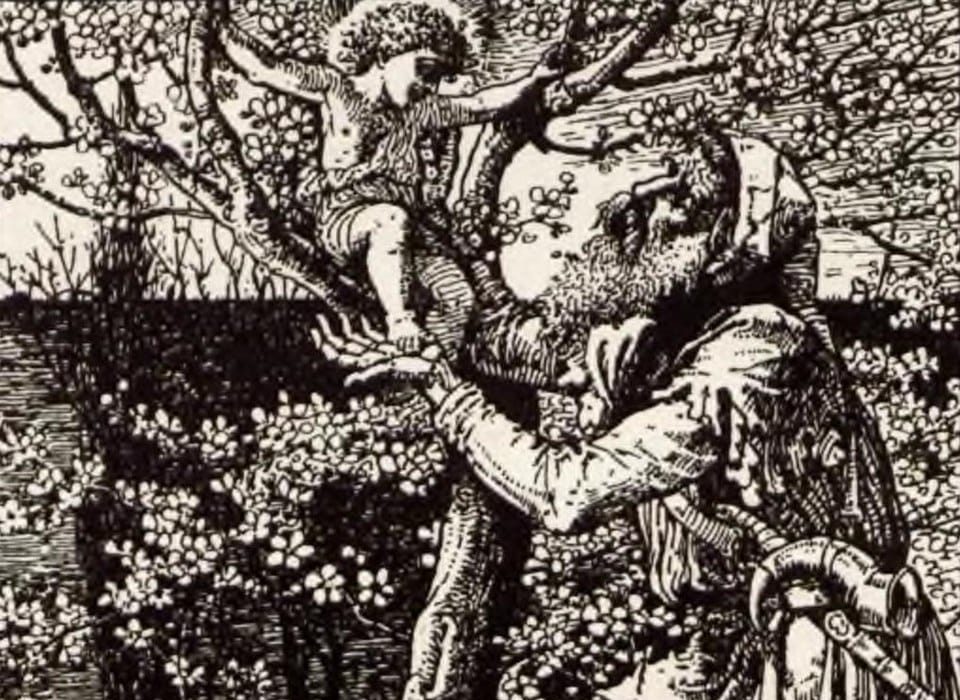There is a wealth of advice on how to write complex thoughts and feelings. Though technique and general advice typically muddle what’s not complex to understand. In other words, one simple way to write complex ideas is to do just that–write simply. Also, using a lens might help; in this case, folklore. Thus, using folkloric language to convey complex ideas is one way to approach writing.
Defining Folkloric Language
Folkloric language, or folkloric prose for that matter, is simple syntax using muscular sentences that say precisely what they mean.
“Folktales for kids share a number of common characteristics,” states the website August House. “Folktales follow straight forward story lines with traditional, easy to follow plotlines.”
In other words, generations before us have passed down the oral tradition of folklore. Therefore, the language has to be simple enough to remember and universally understood. With that in mind, the stories have to have maximum impact while saying more with less.
Examples from Folklore
“There once was a fisherman and his wife who lived together in a hovel by the seashore, and fisherman went out every day with his hook and line to catch fish, and he angled and angled.”
So starts the folkloric tale of “the “The Fisherman and His Wife” by The Brothers Grimm. In it, a fisherman catches an enchanted fish and the man agrees to release it if only to acquiesce to his wife’s demands–that the enchanted fish grant wishes in return for its freedom. Of course, the wife’s wishes become too great. This is due to her greedy ambition. So they are without wishes and are whisked back to their ordinary life.
There is a lot to unpack here, but while there are layers of thematic understanding in this particular story, it still conveys complex ideas using simple language. This is precisely the point of today’s post, as folkloric language has a very interesting appeal in that, while childlike, it has the ability to convey a great deal of information through minimal language.
Simple Language in Scary Stories to Tell in the Dark
Example
In one of my favorite folklore collections, Scary Stories to Tell in the Dark, the author Alvin Schwartz focuses on a very simple prose in order to tell each tale collected within the volume. In “The Thing,” which appears in the collection, two friends–Ted Martin and Sam Miller–are sitting on a fence one evening when they spot something in the field across the street.
“It looked like a man, but in the dark, it was hard to tell for sure. As quickly as it had appeared, it was gone.”
An awfully scary occurrence if you ask me, but one that is simply put. There was something, and then it was gone.
“But soon it appeared again. It walked halfway across the road, then turned around and returned to the field … Then it came for a third time and started toward them.”
Ted and Sam beat the pavement but stop, believing themselves to be acting silly. Sam heads back to get a better look but finds the creature so horrific that they once again run in terror. A year later, Ted becomes ill and Sam stays with him every night. “The night Ted died, he looked just like the frightening thing that they had encountered a year before.”
Explanation
It’s a scary story, but one that fits the premise of this post. In very simple, folkloric language, Schwartz conveys not just a spooky story about a monster chasing a few boys down the road, but one of death and the inability to escape the Grim Reaper’s pursuit.
On the surface level, Ted and Sam were running from a monster, and thus “The Thing” is a simple monster story. As far as the depth of the story, there is quite a bit more. The story speaks of the pain of losing a friend to horrible illness, and the omens we see in life that can inform us of the frailty of life around us at all times. The Thing, in this instance, is an extended metaphor for illness, cancer, and sickness, but Alvin Schwartz doesn’t need to tell us that; in fact, he has to do very little work at all to convey this information.
Conclusion
Using folkloric language to convey complex ideas is a good idea for beginning writer. However, even as a journeyman or master writer, you can always go back and refine your skills with simplicity. Nonetheless, folklore is a great starting point in order to practice literary analysis. For instance, if you want to sharpen your ability to parse metaphor, reading folklore can treat you to great stories that often have deeper meanings and lessons.





Leave a comment